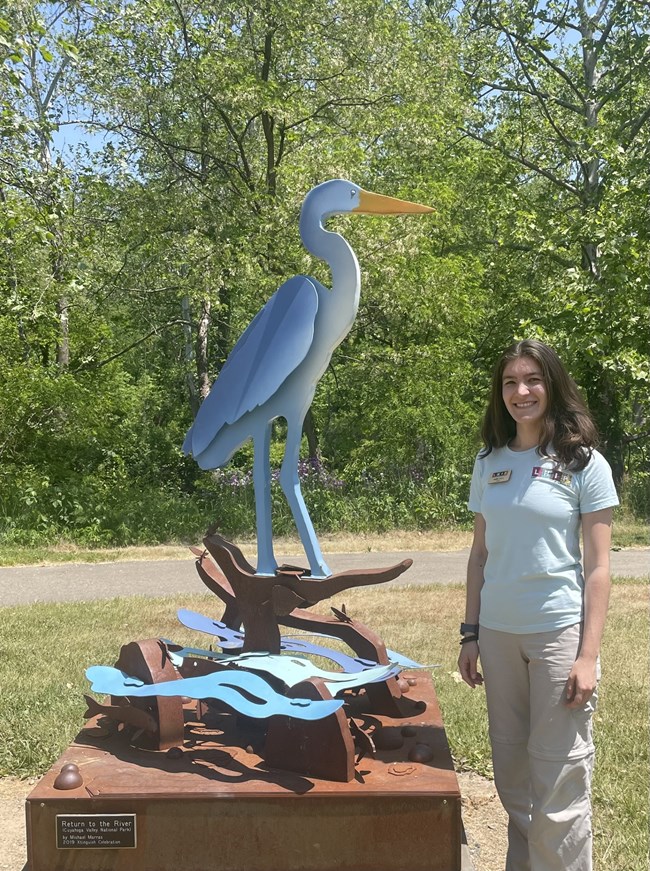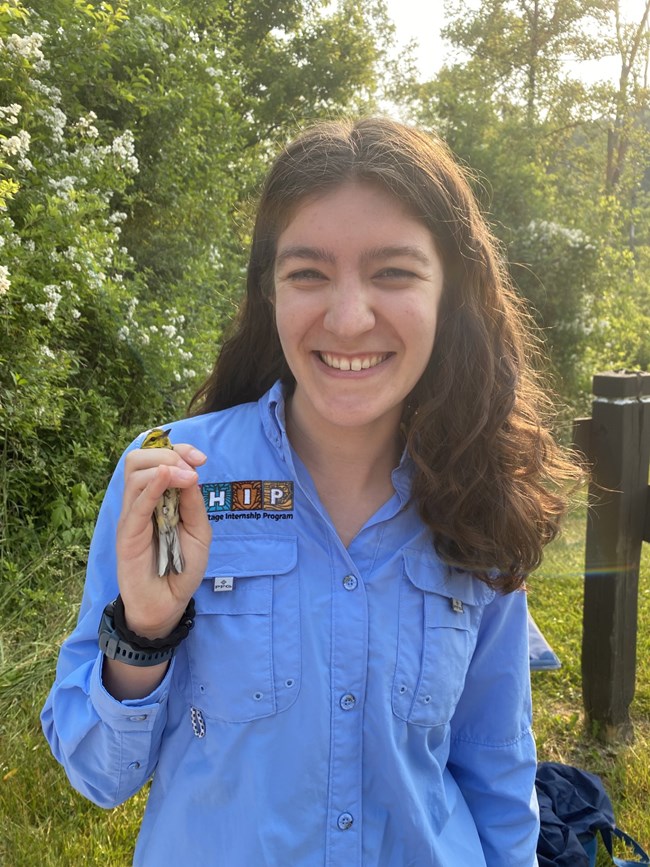Last updated: September 11, 2024
Article
My Park Story: Sofia Gilroy

NPS / Sofia Gilroy
Hello everyone! My name is Sofia Gilroy. I am an environmental science student from Brown University. I’m originally from Texas. In summer 2023, I am stationed in Cuyahoga Valley National Park, located between Cleveland and Akron, Ohio.
I choose to study environmental science on the Conservation Science and Policy track because I want to further my understanding of the natural world and how people relate to it. I am also inspired by the opportunity to benefit environmental education of the public and increase scientific understanding. I don’t know where these passions will lead me after I graduate from college, so I am happily exploring what other people do with their love for the natural world.
This led me to my current position in Cuyahoga Valley National Park, where I am getting hands-on experience working as a scientist with the National Park Service. This summer, as part of the Latino Heritage Internship Program of Environment for the Americas, I am a Natural Resource Management Intern. My focus is on the Great Blue Heron Monitoring Project. I have also participated in bird banding.
Great Blue Heron Monitoring Project
The Great Blue Heron Monitoring Project began more than thirty years ago, in the spring of 1993. Its goal is to monitor population trends in herons, which could serve as an indicator of the overall health of the park’s watershed. Great blue herons were chosen because they are greatly dependent on the quality of their habitats. Their habitats include open water, marshes, swamps, lakes, and rivers. These herons were once rare in Cuyahoga Valley and are now common.
My role this summer was to compile all the data available into an online format and interpret it, with the goal of improving the resolution of our understanding of great blue herons in the park. In the face of lost physical records of data, my role pivoted to creating a report detailing what this project could look like in the future and potential improvements to the monitoring effort. Looking to the future, the monitoring of great blue herons in Cuyahoga Valley National Park could contribute to a deeper understanding of these birds amid global change. For example, continued monitoring could help us understand how climate change may affect herons’ breeding range or how strong heronry site fidelity is in the long term.

NPS / Sofia Gilroy
Bird Banding
About every ten days this summer, I and other Resource Management employees went out and operated the pilot season of the park’s Monitoring Avian Productivity and Survivorship (MAPS) bird banding station. Following the MAPS banding protocol, birds are safely sexed, aged, measured, weighed, and then banded and released. This information cannot be obtained by other methods of bird monitoring, so bird banding is particularly valuable to researchers. The MAPS protocol is standardized across more than 1,300 banding stations in the United States and Canada.
Over time, banded birds will be recaptured at our banding station and this will provide information about avian survivorship. Ratios of fledgling birds to adult birds are also collected. This gives us information on avian productivity since the station is operated during breeding season. The birds that are particularly interesting to band in the summer are those that migrate to Central and South America in the winter. When the park finds these birds again next summer, we will know that they traveled all the way down south and made it back to breed in Ohio. Some favorite birds I’ve seen at the banding station so far include hooded warblers, scarlet tanagers, indigo buntings, and white-eyed vireos. Learning how to handle these delicate animals and interpret their physical features to determine their breeding status, age, and sex has been amazing!
Find out more about my summer at my Latino Heritage Internship Program Blog.
